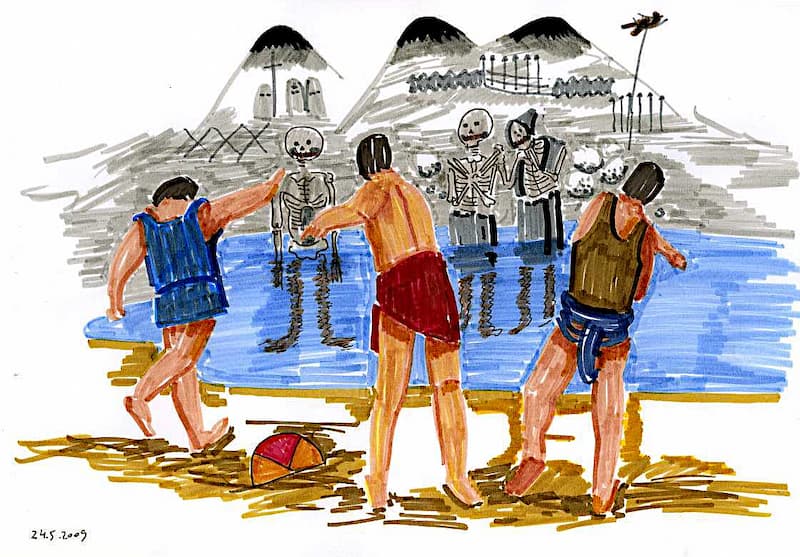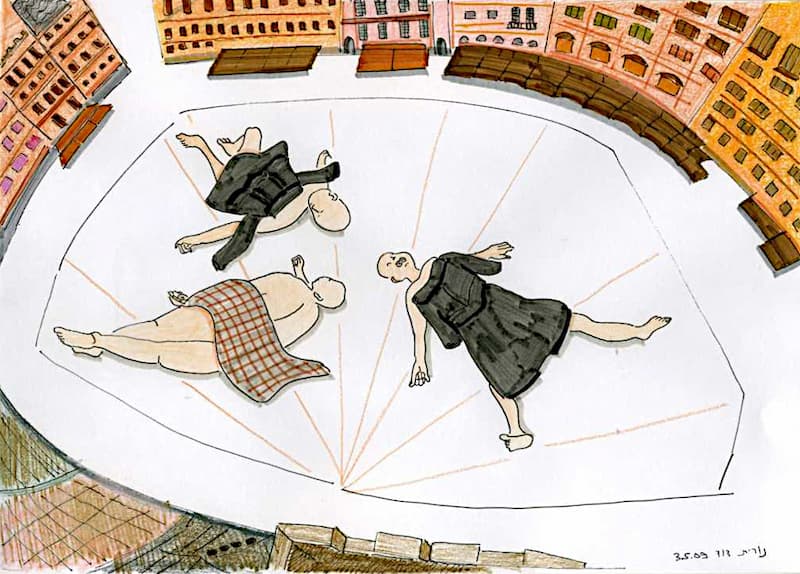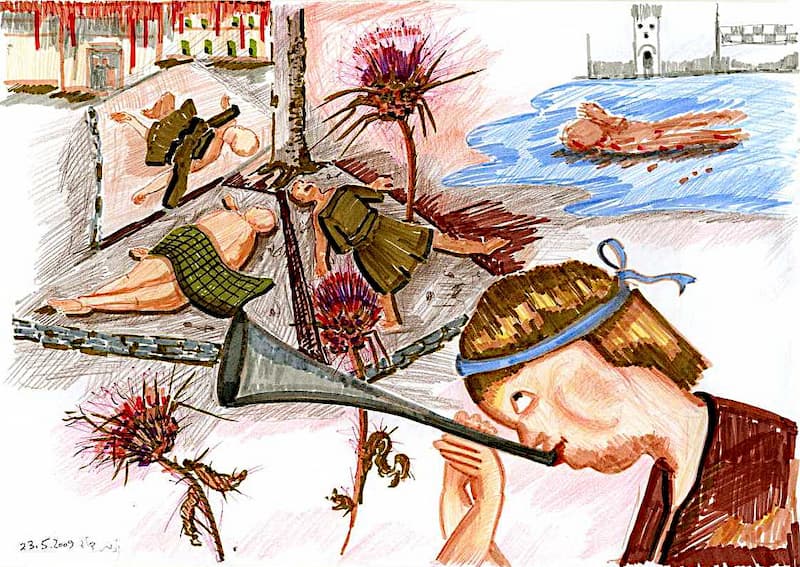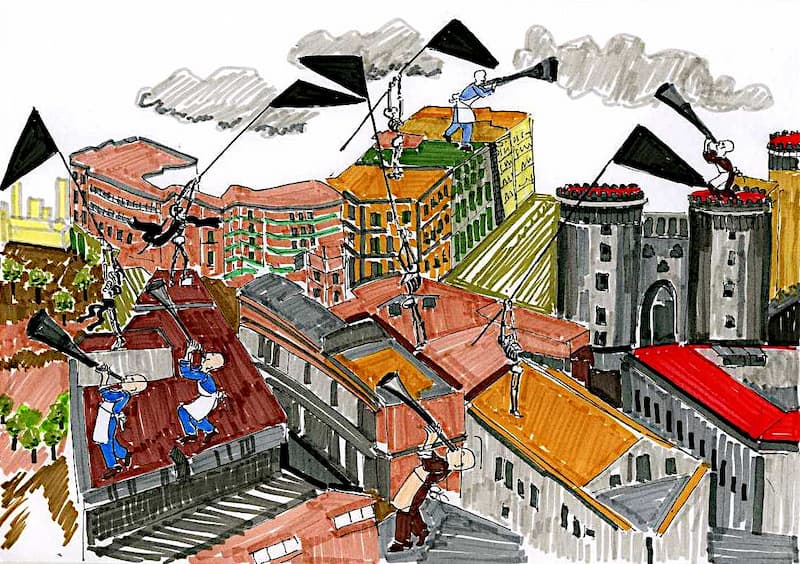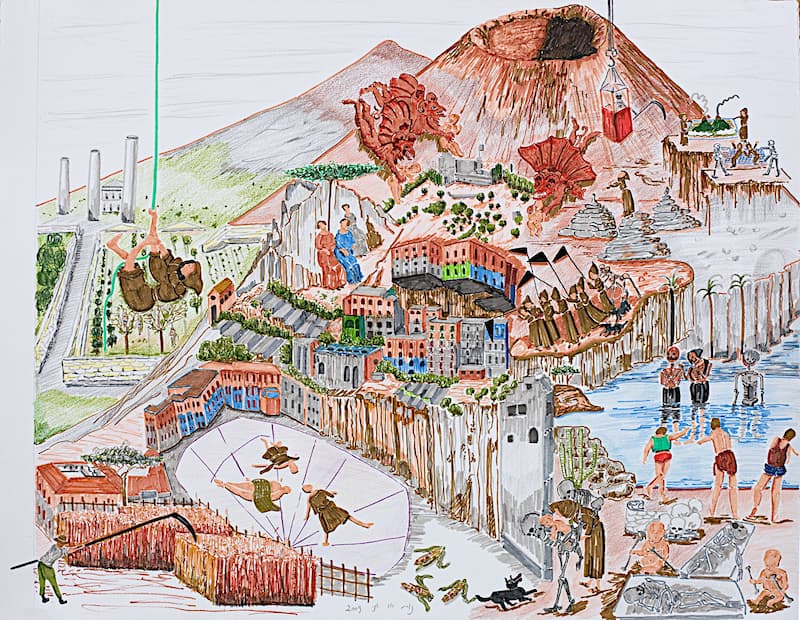כרך ב - חוברת 2
אפריל 2025 - ניסן תשפ"ה
עורך ראשי: ד"ר אופיר לוי
עוזר עורך ראשי: גל אפיק
עורך המאמרים: אייל שדה
חברי המערכת: ד"ר קובי סגל, ד"ר אילן ולד, שירלי אילת גרינברג, ד"ר אלכס אביב, ד"ר רבקה דוידוביץ-אפשטיין ופרופ' סמדר בן-אשר.
סוקרים: ד"ר אביב אלכס, גב' אילת גרינברג שירלי, גב' אלמוג יעל, ד"ר אמיר מיכל, ד"ר בן יהודה אריאל, פרופ' בן-אשר סמדר, מר גולדמן איתן, מר גורי שאול, מר גרזי שמואל, ד"ר ולד אילן, ד"ר חשמונאי רות, ד"ר מרמלשטיין רונה, ד"ר סגל קובי, ד"ר קיברי ליבוביץ ליאת, מר שטיינברג דני.
רישומים: נורית דוד
מו"ל: ליאור גודקאר
גיליון מודפס זמין לרכישה מוקדמת
במהדורה מוגבלת
תוכן עניינים
כרך ב (2) - אפריל 2025
דבר העורך הראשי - ד"ר אופיר לוי
פונקציות הווידוי הפסיכודינמי ופעולתן בקליניקה - פרקסיס הווידוי בעידן החילון - בנימין גולדנהירש
ריחוף על פני תהום – נוכחות א־מילולית ולא מומשגת במחזור החיים ובטיפול בטראומה - הלל וייס, ניסים סמדז'ה
ממחסום להתמרה: התערבויות שאינן פרשניות מתאוריית השדה הביוניאנית - רני לוי
קירות נופלים ובתים בנויים על חול – דימויי בית אחרי השבעה באוקטובר - בשמת קליין
מדור אתיקה: "הילכו שניים יחדיו בלתי עם נועדו" - תבונה מלאכותית ופסיכותרפיה – אתגרים אתיים - ד"ר אלכס אביב
מאמרים
כרך ב (2) - אפריל 2025
נראה שהמציאות האחרת, של אחרי השביעי באוקטובר, ממשיכה ללוות אותנו, בטח כל עוד עשרות חטופים חיים ומתים מוחזקים בשבי חמאס. נכון, חטופים וחטופות משתחררים, בקצב מורט עצבים, ולכן לראשונה מתוך החושך רואים מעט כוכבים – אך הדרך ארוכה.
קרא עודמושג ה'וידוי' (confession) נעדר במידה רבה מהספרות הפסיכואנליטית – הן כמושג תיאורטי והן כפרקסיס (מעשה, פעולה) טיפולי. בפעולת הווידוי, ישות אחת בדיאדה מכירה, חושפת ומצהירה בצורה פרופורמטיבית ("מבע ביצועי") אמת שהייתה חבויה בפני היישות האחרת; בפעולה היכולה ליצור התמרה. מאמר זה דן בשלוש פעולות וידוי שונות המתקיימות בתהליך טיפולי-פסיכודינמי, על בסיס שלוש מסורות פסיכואנליטיות מרכזיות: תיאוריית הדחף, תיאוריה של יחסי אובייקט והגישה ההתייחסותית. מתוך בחינה מחודשת של מעשה הווידוי בהקשר פסיכודינמי, ניתן גם להבין את תופעת הווידוי לדורותיה ולבחון אותה מחדש.
קרא עודבמאמר זה אנו מבקשים לדון באזור בעל איכות מיוחדת בחיי הנפש, שאותו אנו מכנים הרובד הא־מילולי – ומציעים כי רובד זה הוא תשתיתי וחיוני לתפקודה של הנפש, ולקיומה. בשל חמקמקותו, ולמרות חשיבותו גם במפגש הטיפולי, קשה עד מאוד להמשיגו. המושג 'א־מילולי' שונה מהמושג 'לא־מילולי', שכן האחרון מתאר רובד שהיה מילולי, ובשל טראומות או בשל מנגנוני הגנה – הפך ללא־מילולי. ואילו הא־מילולי קיים בפני עצמו – לא כניגוד של השפה והמילים; והוא קשור לפוטנציאל ההתמרתי העליון של האדם.
קרא עודמאמר זה מבקש להתמודד עם שלושה נושאים מרכזיים. האחד הוא המחסום בטיפול ודרך המשגתו בתיאוריית השדה הביוניאנית מבית מדרשו של ד"ר אנטונינו פרו וחבריו לאסכולת פאביה; השני הוא שימוש בהתערבויות שאינן פרשניות באופן המקדם יציאה ממחסום; והשלישי הוא תיאור מספר מושגים מן הטכניקה הטיפולית בתיאוריה זו: השדה, דמויות בטיפול, פירוש נרטיבי בלתי רווי, התמרות במשחק, המטפל כדמות בשדה, ודמות האנחנו. הדברים יוצגו בעזרת תיאור של מחסום בטיפול ויציאה ממנו
קרא עודבמאמר זה אתבונן בחוויית הבית ובתמורות שחלו בה בעקבות אירועי השבעה באוקטובר. אתייחס לבית הנפשי ובה בעת גם לבית הפיזי, ולאופנים שבהם יכולה לשמש אותנו ההקשבה לדימויי בית העולים בטיפול בעת הזו. חוויית הבית היא חוויה פנימית ואישית, אולם היא מושפעת באופן טבעי גם מהמציאות החיצונית והקולקטיבית. ככל שחולף הזמן, והמלחמה מתמשכת, מתווספים אליה אין ספור דימויים קשים, ועוד ועוד בתים הרוסים משני צדי המתרס.
קרא עודבטורו טוען ד"ר אביב שהתבונה המלאכותית (AI) מתקדמת בצעדי ענק לקראת השתלטות על כל תחומי החיים, לרבות בריאות הנפש ופסיכותרפיה. הוא מדגים כי לצד היתרונות בשימוש ב-AI צצים אתגרים אתיים, בפרט בתחום הפסיכותרפיה, המחייבים התייחסות.
קרא עודחברי המערכת
כרך ב (2) - אפריל 2025
ד"ר אופיר לוי
עובד סוציאלי קליני, פסיכותרפיסט, מטפל קבוצתי ומדריך. מנהל-מייסד, מורה ומדריך במסגרת התוכנית התלת-שנתית לפסיכותרפיה פסיכודינמית בבית הספר לעבודה סוציאלית באוניברסיטת תל-אביב. מרצה במסלול לטראומה במסגרת התואר השני בבית הספר לעבודה סוציאלית בתל-אביב. שירת 25 שנים בצה"ל, מתוכן 21 שנים כקצין בריאות נפש, ובמסגרתן הוא ניהל במשך כ- 10 שנים את המרפאה לנפגעי פוסט טראומה של הצבא. בעל קליניקה פרטית במודיעין.
ד"ר קובי סגל
פסיכולוג קליני מדריך, פסיכואנליטיקאי מנחה למבוגרים וילדים בחברה הישראלית והבין־לאומית לפסיכואנליזה וחבר הוועדה המדעית של החברה הפסיכואנליטית בישראל. הוא מלמד, מדריך וחבר ועדת הוראה במסגרת התוכנית התלת-שנתית לפסיכותרפיה פסיכודינמית בבית הספר לעבודה סוציאלית באוניברסיטת תל-אביב, מלמד במסלול קליין בבית הספר לרפואה באוניברסיטת תל אביב, מדריך במחלקה לפסיכולוגיה באוניברסיטת בר־אילן, מלמד בתוכנית "התקרבות" של החברה הפסיכואנליטית, מלמד ומדריך בתוכנית הליבה לילדים ונוער במרכז ויניקוט. הוא עובד בקליניקה פרטית ברמת גן.
ד"ר אילן ולד
פסיכולוג קליני, מדריך בפסיכותרפיה ופסיכודיאגנוסטיקה, מלמד ומדריך בשרות הפסיכולוגי של האוניברסיטה העברית. מדריך במגמה הקלינית, החוג לפסיכולוגיה, האוניברסיטה העברית, מדריך בתוכנית התלת שנתית לפסיכותרפיה פסיכודינמית של בית הספר לעבודה סוציאלית, אוניברסיטת תל אביב. מטפל ומדריך בקליניקה פרטית, ירושלים.
שירלי אילת-גרינברג
פסיכולוגית קלינית מדריכה בפסיכותרפיה ובפסיכודיאגנוסטיקה. לשעבר הפסיכולוגית הראשית של מערך בריאות הנפש בצה"ל במשך 19 שנים. מרצה בתכנית הדרכה על הדרכה ומנחה בסמינר קליני במסגרת התוכנית התלת שנתית לפסיכותרפיה פסיכודינמית בבית הספר לעבודה סוציאלית באוניברסיטת תל אביב, חברת ועדת הוראה של התוכנית ויו"ר ועדת סטודנטים. מכשירה, מלמדת ומרצה בתחומי הפסיכולוגיה הקלינית במסגרות שונות. יו"ר וועדות בוחנות של משרד הבריאות במבחני ההתמחות בפסיכולוגיה קלינית. בעלת קליניקה לטיפול והדרכה.
ד"ר אלכס אביב
פסיכיאטר, אנליטיקאי קבוצתי, מרצה בתוכנית התלת שנתית לפסיכותרפיה פסיכודינמית בבית הספר לעבודה סוציאלית בת"א ובמרכז האקדמי ללימודי המשך ברפואה ע"ש סאקלר, יו"ר וועדת האתיקה של התוכנית התלת שנתית לפסיכותרפיה פסיכודינמית בבית הספר לעבודה סוציאלית באוניברסיטת תל-אביב. מנהל הוועדה המייעצת לשר הבריאות בענייני היפנוזה.
ד"ר רבקה דוידוביץ-אפשטיין
פסיכולוגית קלינית מדריכה בפסיכותרפיה ובפסיכודיאגנוסטיקה. לשעבר יו"ר האיגוד הישראלי לפסיכותרפיה, יו"ר הועדה המקצועית לפסיכולוגיה קלינית של משרד הבריאות, הפסיכולוגית הראשית של מערך המודיעין ומנהלת מרפאה לבריאות נפש. במהלך השנים מרצה ומדריכה בתחומי הפסיכולוגיה הקלינית והפסיכותרפיה במגמה הקלינית באוניברסיטת בר אילן, במסגרות שונות לבריאות הנפש ובבתי ספר שונים לפסיכותרפיה, ביניהם, התכנית התלת שנתית לפסיכותרפיה דינמית בביה"ס לעבודה סוציאלית באוניברסיטת תל אביב. בעלת קליניקה פרטית לטיפול ולהדרכה.
פרופ' סמדר בן-אשר
פסיכולוגית חינוכית מומחית, חוקרת בתחום אובדן אבל ושכול וקבוצות מודרות. ראשת התוכנית לייעוץ חינוכי במכללה האקדמית אחוה וחברת סגל מרכז מנדל בנגב.
Abstracts
Vol. 2, No. 2 - April 2025
The Functions and Clinical Action of 'Psychoanalytic Confession'
Benjamin Goldenhersh
The concept of 'confession' has been largely overlooked in psychoanalytic literature, both as a theoretical construct and as a therapeutic practice. This study explores the significant implications of confession within the psychoanalytic framework. In this context, confession involves one party in the therapeutic dyad acknowledging, revealing, and declaring a hidden truth to the other through a performative speech act, which holds transformative potential.
The study examines three distinct confessional actions in psychodynamic therapy, based on three major psychoanalytic traditions: drive theory, object relations theory, and relational psychoanalysis. Through this examination, the article demonstrates how confession serves multiple clinical functions, including catharsis, punishment, identity formation, and the establishment of a therapeutic covenant.
The conceptualization of psychoanalytic confession has two key implications. First, it reconceptualizes psychoanalysis as a praxis—a method of action—rather than solely a method of interpretation. Second, it raises important ethical questions concerning the role and responsibility of the therapist in psychodynamic therapy. By analyzing confession through these different psychoanalytic lenses, the article provides a comprehensive understanding of this complex phenomenon. It explores how confession can serve as a means of purging overwhelming content, shaping subjectivity, and fostering a shared ethical space between therapist and patient. This study thus contributes to a deeper understanding of the transformative power and ethical considerations surrounding psychoanalytic confession.
Keywords: Confession, Object-relations, Relational-psychoanalysis, Therapeutic praxis (action), Ethics
Hovering Over the Abyss The A-Verbal and Unconceived Presence in the Cycle of Life and in the Treatment of Trauma
Hillel Weiss and Nissim Semadeja
In this essay we seek to discuss an area of special quality in the human psyche, which we call the 'a-verbal' dimension – and suggest that this dimension is infrastructural and essential for the functioning, and indeed the very existence, of the psyche. Despite its great importance, its evasiveness creates a difficulty to conceive, deliberate and appreciate in the clinical work.
The term 'a-verbal' is distinct from the term 'non-verbal', since the latter describes a psychic dimension that was once verbal, and due to trauma became non-verbal. Whereas the 'a-verbal' is a dimension that exists in itself – not as a contrast to language and words. As such it is closely related to the highest transformational realm; Hence its importance also in the healing processes of psychotherapy.
Our interest in the 'a-verbal' dimension is the result of many years of clinical work with patients who are victims of trauma and sexual assault. The 'a-verbal' qualities are often alluded in case presentations of these patients.
We will then review representations of this dimension in psychoanalytic and philosophical writing, as well as in the arts. Further we will propose an understanding of psychosomatic symptoms, such as self-cuts or addiction, as physical and regressive representation of pain that cannot be expressed in words. We will then turn to the vitality of the therapist's presence in this dimension devoid of words or concepts, an analytic stance we call 'Hovering Over the Abyss', and will present clinical examples of this analytic presence.
Keywords: Trauma, Psychosomatic, Non-verbal, Interpretation, Self-harm
From Impasse to Transformation: Enabling Development through Non-Interpretive Interventions from Post-Bionian Field Theory
Rany Levy
This article seeks to address three central themes. Firstly, it deals with the therapeutic impasse and how it is approached in post-Bionian field theory, developed by Dr. Ferro and his colleagues. Secondly, it discusses the use of non-interpretive interventions that both address the impasse and allow for progress and breakthrough. Lastly, it introduces several concepts from this therapeutic technique: the field, characters in the field, transformation in play, the therapist as a character, and the 'we-character'. These aspects will be illustrated through descriptions of a block in the therapeutic work, which occurred and solved over a relatively short period.
Keywords: Post-Bionian field theory, therapeutic impasse, non-interpretive interventions
Walls Falling Down and Houses Built on Sand: House Images Post-October 7th
Basmat Klein
This article explores the transformation of the concept of 'home' in the aftermath of the events of October seventh. It examines both the physical and the mental dimensions of home, investigating how listening to these images can serve as a therapeutic tool.
The events of October seventh can be seen as a traumatic disruption of our fundamental sense of security, particularly in relation to our homes. The once comforting haven has, in an instant, transformed into a site of terror and nightmare.
The aim of this article is to analyze the imagery of houses and homes, and their evolution during this tumultuous period. This analysis takes a dual approach: first, treating the house as a mental construct akin to dreams, which have become more vivid for many individuals during this time, thus highlighting the heightened significance of house imagery in clinical settings. Secondly, it considers the physical house and proposes methods for understanding its impact on mental experiences. Drawing on Gaston Bachelard's concept of the house as a mental space of refuge and belonging, as well as insights from psychoanalytic and architectural theory, this article suggests using house imagery to create a mental sanctuary for contemplation and dreaming.
Clinical examples will be presented to illustrate these concepts.
Keywords: Domestic space, Psychoanalysis, Architecture, Trauma, War and terror
